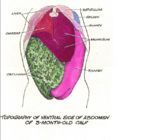|
Welcome to WikiVet,
A collaborative initiative between the UK Vetschools to develop a comprehensive on-line veterinary knowledge base.
Content
|
|
WikiPath
Covers the undergraduate veterinary pathology curriculum.
WikiBugs
Information about veterinary bacteriology, virology and parasitology.
Wiki Anatomy and Physiology
Information about veterinary anatomy, histology and physiology.
WikiBlood
Information about the components of blood and associated immunological diseases.
WikiClinical
Clinical information.
WikiVPH
Information about Veterinary Public Health.
WikiDrugs
Information about Pharmacology and Therapeutics. - Currently under construction.
|
|
Other resources
|
|
WikiWords
A working glossary for Wiki editors.
Feedback
An area for any comments on the content or design of the site.
e-learning Resources
Access to a range of on-line courses, videos and images.
Veterinary Education
For veterinary educators to collaborate and share expertise.
About WikiVet
More about who is involved in the WikiVet project.
WikiMap
Please try using our interactive map to find other users and add your own location.
|
|
WikiNews
|
|
14th October 2008 - WikiClinical Ready for Population
All the WikiClinical stub pages are now in place. Please feel free to start populating these pages with lots of clinical knowledge. If you are having trouble editing pages please refer back to our help pages.
9th October 2008 - The Wiki is Launched Attendees of the WikiVet Launch The WikiVet project was officially launched at MEDEV, Newcastle University. People from varying aspects of the Veterinary, Educational, Pharmaceutical and Medical professions attended the conference. Five people also attended the virtual conference, which made for an exciting yet interactive session. We feel that the launch was a great success and look forward to watching WikiVet grow.
|
|
|
|
 Abdominal development of a young cow - Copyright Prof.Pat Mccarthy The ruminant stomach is composed of 4 separate compartments. Food passes first into the rumen, then reticulum, omasum and finally into the abomasum before entering the duodenum. The first three compartments are adapted to digest complex carbohydrates with the aid of microorganisms which produce volatile fatty acids - the major energy source of ruminants. The last compartments, the abomasum resembles the simple monogastric stomach in structure and function.
The microorganisms in the ruminant stomach also synthesise all of the B vitamins, vitamin C and vitamin K. Vitamin synthesis in the rumen is sufficient for growth and maintenance. Only vitamins E, D and A should be provided in the ruminant diet. Under normal conditions, ruminants will not require B vitamins added in the diet. Cobalt is needed for vitamin B12 synthesis and so cobalt should be provided in the diet or vitamin B12 injected directly into the bloodstream. In stress conditions, vitamin B3 (Niacin) and vitamin B1 (Thiamine) may also need to be provided in the diet....
Click here to read more
|
|
|


